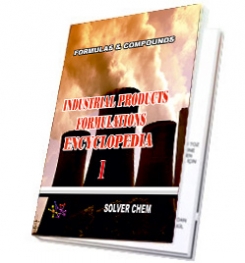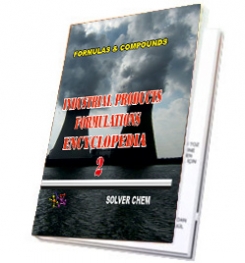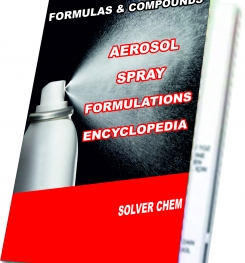Is a stimulating review of dye-fixation processes, has pointed out that when buying and running process machines we must not forget that the fundamental requirement is the efficiency of the molecular processes. This is a necessary reminder when considering the mechanism of steaming processes, where we find easily overlooked, but significant, molecular phenomena. It is desirable, in the first place, to understand the properties of steam itself.

Steam: Terms and Properties:
Water vapour at 1000C and standard atmospheric pressure is known as saturated steam, and as dry saturated steam if it contains no droplets of liquid water. Steam at 1000C is very rarely found in a printworks, however, and the differences are significant.Boilers are designed to provide steam at pressures substantially above atmospheric pressure. This allows the use of smaller-diameter pipes to convey the substantial weights of water vapour from the boiler to the steamer and other steam-using machines.Saturated steam at 35 kPa above atmospheric pressure (5 lbf in–2 gauge pressure) occupies three times the volume of the same mass of steam at 350 kPa. At pressures above atmospheric, water boils at a temperature above 100 0C, more heat is required to evaporate a given mass of water and the steam produced has a high temperature. The temperature of saturated steam at 350 kPa above atmospheric pressure is 1480C. Any cooling would produce condensation, and this is why steam at a certain pressure, and a temperature corresponding to the boiling point of water at that pressure, is known as saturated steam.
Saturated steam is often deliberately superheated in the boiler house, giving a gas which does not condense until it has given up its superheat. This ensures that steam pipes do not carry a significant volume of troublesome water. Superheat is also introduced when saturated steam is allowed to expand rapidly as it passes through a valve into a chamber at lower pressure. For example, steam at 700 kPa and 170 0C when allowed to expand at 70 kPa falls to 148 0C.

Dye Fixation in Steam:
Steam can be a convenient source of both water and heat as both are transferred rapidly and uniformly over the surface areas of printed fabric entering a steam chamber. As we have seen, however, steam may be wet or dry, saturated or superheated, and the conditions of use must be chosen and maintained.
The essential requirements in all print fixation processes using steam are:
Steam: Terms and Properties:
Water vapour at 1000C and standard atmospheric pressure is known as saturated steam, and as dry saturated steam if it contains no droplets of liquid water. Steam at 1000C is very rarely found in a printworks, however, and the differences are significant.Boilers are designed to provide steam at pressures substantially above atmospheric pressure. This allows the use of smaller-diameter pipes to convey the substantial weights of water vapour from the boiler to the steamer and other steam-using machines.Saturated steam at 35 kPa above atmospheric pressure (5 lbf in–2 gauge pressure) occupies three times the volume of the same mass of steam at 350 kPa. At pressures above atmospheric, water boils at a temperature above 100 0C, more heat is required to evaporate a given mass of water and the steam produced has a high temperature. The temperature of saturated steam at 350 kPa above atmospheric pressure is 1480C. Any cooling would produce condensation, and this is why steam at a certain pressure, and a temperature corresponding to the boiling point of water at that pressure, is known as saturated steam.
Saturated steam is often deliberately superheated in the boiler house, giving a gas which does not condense until it has given up its superheat. This ensures that steam pipes do not carry a significant volume of troublesome water. Superheat is also introduced when saturated steam is allowed to expand rapidly as it passes through a valve into a chamber at lower pressure. For example, steam at 700 kPa and 170 0C when allowed to expand at 70 kPa falls to 148 0C.
Dye Fixation in Steam:
Steam can be a convenient source of both water and heat as both are transferred rapidly and uniformly over the surface areas of printed fabric entering a steam chamber. As we have seen, however, steam may be wet or dry, saturated or superheated, and the conditions of use must be chosen and maintained.
The essential requirements in all print fixation processes using steam are:
- The pick-up of enough water to swell the thickener film, but not so much as to cause the print to spread.
- Dispersion and solution of the dye, and production of a liquid medium through which the dye can diffuse to the fibre surface.
- Absorption of water by fibres such as cotton, nylon and wool, which must be swollen to allow penetration of dye.
- Raising the temperature to a level that accelerates the processes of diffusion,especially into the fibre.
In some cases steam can satisfy all the requirements but, as in all coloration processes, auxiliary chemicals may be introduced to assist dye solution and diffusion, or to make the process less critically dependent on the maintenance of ideal conditions. In order to illustrate the phenomena that can occur during the steam fixation of prints, one of the most critical and best-studied processes is considered here in detail.
Vat Dye Prints (all-in process) on Cotton:
The insoluble vat dyes must be reduced to their soluble leuco forms, to allow diffusion into the fibre. A stabilised reducing agent, sodium formaldehyde sulphoxylate (CI, is activated when the print temperature approaches 100 0C and reduction therefore occurs inside the steamer, the highly soluble potassium carbonate providing the required alkalinity. It has been shown that the vat dyes must be selected from those with aqueous leuco potentials smaller than –920 mV. A typical paste formulation is shown in Recipe; the print would be dried rapidly, cooled and then steamed for 8–20 min in air-free steam, before rinsing, oxidising, soaping and drying.
The steaming stage was known to be critical, especially where the cover of the design was high. Difficulty was experienced in keeping the temperature of the steam below 103 0C, and dye fixation was reduced when the temperature rose above this level. The incorporation of glycerol in the print paste, to act as a humectant, improved the fixation. Thorough and rapid drying of the print was, however, found to be essential because the stability of the reducing agent in air under damp conditions was not satisfactory . In practice, after thorough drying a cooling procedure was necessary.In this discussion the steam conditions can be assumed to be ideal, that is, no droplets of liquid water are present, and that it has a temperature of 100 0C, with no superheat. When the dry print enters the steam, three exothermic reactions occur.
CATIONIC DYES FIXATOR
INDUSTRIAL PRODUCTS
FORMULATIONS
ENCYCLOPEDİA - 1
is enough.

This encyclopedia has many formulations of textile chemicals and derivatives,textile pigment printing paste formulas,silicone micro emulsion preparation,cationic fixator,dispersing agent for textile chemicals,stabilizating agent in textile processing,ion immobilizing agents,hydrogen peroxide stabilizer,sequestering agents in textile chemicals,anti pilling agent in textile processing,cationic softener,nonionic softener,silicone softener manufacturing processes, sizing agent in textile chemicals,organic and organomineral fertilizers for house plants, polyurethane floor coating cleaner formulations,epoxy floor coating cleaner production process,polyurethane concrete coating cleaning detergents, formulations of emulsifier and emulsions,ultrasound gels formula,medical gels manufacturing,ecg gels making,cats and dogs care and cleaner products formulations, aircraft and airport care and cleaner products production,corrugated cardboard adhesive and hardeners resin manufacturing process,glass products,pencil types production,chalk formulations,chafing fuel gel making formulas,kindling fuel gel productions,industrial powder degreaser, industrial fluid degreaser,welding burn marks remover and cleaner products formulas,wood furniture cleaner and polisher formulation,aluminium cleaning and polishing agents formulas,fuel tank cleaner formulations,shoe care and polisher productions,wicrowave exterior cleaner making,concrete care and cleaner products manufacturing,mortar and brick cleaner formula,marble crystallizers production,toilet reservior block manufacturing process,vinyl cleaner and polisher formulations.

All industrial products in the encyclopedia are producible easily. You need no help and no technıcal support. The encyclopedia is enough to produce textile chemicals itself.
INDUSTRIAL PRODUCTS
FORMULATIONS
ENCYCLOPEDIA - 1
is written clear and understandable.
RELATED TAGS: Making dyes fixator, properties of dyes fixator, application of dyes fixator, Dyes fixator what, how to make fixator in textile, formula of cationic fixator, composition of cationic fixator, Silicone microemulsion properties, making microsilicone emulsion, how to make silicone microemulsion,formulation of silicone micro emulsion, silicone microemulsion production process, types of dyes, how to use textile dyes, composition of textile dyes, using textile dyes, What is textile pigment printing binder, pigment printing binder production process, textile pigment printing paste composition, compounds, formulas of textile pigment printing binder, how to make textile chemical, making textile chemicals, production of textile chemicals, textile chemicals compositions, compounds, formulations textile chemicals, textile chemicals compounds, formula of textilşe chemicals, textile chemicals manufacturing,textile chemicals manufacturer, chemicals used in textile processing, textile chemicals products,textile processing solution, how to process textile chemicals,textile chemicals formulations,textile chemicals production process.
Vat Dye Prints (all-in process) on Cotton:
The insoluble vat dyes must be reduced to their soluble leuco forms, to allow diffusion into the fibre. A stabilised reducing agent, sodium formaldehyde sulphoxylate (CI, is activated when the print temperature approaches 100 0C and reduction therefore occurs inside the steamer, the highly soluble potassium carbonate providing the required alkalinity. It has been shown that the vat dyes must be selected from those with aqueous leuco potentials smaller than –920 mV. A typical paste formulation is shown in Recipe; the print would be dried rapidly, cooled and then steamed for 8–20 min in air-free steam, before rinsing, oxidising, soaping and drying.
The steaming stage was known to be critical, especially where the cover of the design was high. Difficulty was experienced in keeping the temperature of the steam below 103 0C, and dye fixation was reduced when the temperature rose above this level. The incorporation of glycerol in the print paste, to act as a humectant, improved the fixation. Thorough and rapid drying of the print was, however, found to be essential because the stability of the reducing agent in air under damp conditions was not satisfactory . In practice, after thorough drying a cooling procedure was necessary.In this discussion the steam conditions can be assumed to be ideal, that is, no droplets of liquid water are present, and that it has a temperature of 100 0C, with no superheat. When the dry print enters the steam, three exothermic reactions occur.
INDUSTRIAL TEXTILE CHEMICALS
AND
PRODUCTION METHODS
AND
PRODUCTION METHODS
MANUFACTURING PROCESS OF CATIONIC DYE FIXATOR is not very complicated. For the production, there is need usable and tried a formulation, raw materials and mixing tank. For raw materials to be used, quantities to be used and ingredients usage rankings, you should look into this formulation. Therefore, formulation and productıon methods of dyes fixator are important. If you have not a good formulation, you cannot make healthy and efficient production of any dyes cationic fixator in textile chemicals.
If you need any manufacturing formulations and production methods about
CATIONIC DYES FIXATOR
INDUSTRIAL PRODUCTS
FORMULATIONS
ENCYCLOPEDİA - 1
is enough.

This encyclopedia has many formulations of textile chemicals and derivatives,textile pigment printing paste formulas,silicone micro emulsion preparation,cationic fixator,dispersing agent for textile chemicals,stabilizating agent in textile processing,ion immobilizing agents,hydrogen peroxide stabilizer,sequestering agents in textile chemicals,anti pilling agent in textile processing,cationic softener,nonionic softener,silicone softener manufacturing processes, sizing agent in textile chemicals,organic and organomineral fertilizers for house plants, polyurethane floor coating cleaner formulations,epoxy floor coating cleaner production process,polyurethane concrete coating cleaning detergents, formulations of emulsifier and emulsions,ultrasound gels formula,medical gels manufacturing,ecg gels making,cats and dogs care and cleaner products formulations, aircraft and airport care and cleaner products production,corrugated cardboard adhesive and hardeners resin manufacturing process,glass products,pencil types production,chalk formulations,chafing fuel gel making formulas,kindling fuel gel productions,industrial powder degreaser, industrial fluid degreaser,welding burn marks remover and cleaner products formulas,wood furniture cleaner and polisher formulation,aluminium cleaning and polishing agents formulas,fuel tank cleaner formulations,shoe care and polisher productions,wicrowave exterior cleaner making,concrete care and cleaner products manufacturing,mortar and brick cleaner formula,marble crystallizers production,toilet reservior block manufacturing process,vinyl cleaner and polisher formulations.

All industrial products in the encyclopedia are producible easily. You need no help and no technıcal support. The encyclopedia is enough to produce textile chemicals itself.
INDUSTRIAL PRODUCTS
FORMULATIONS
ENCYCLOPEDIA - 1
is written clear and understandable.
RELATED TAGS: Making dyes fixator, properties of dyes fixator, application of dyes fixator, Dyes fixator what, how to make fixator in textile, formula of cationic fixator, composition of cationic fixator, Silicone microemulsion properties, making microsilicone emulsion, how to make silicone microemulsion,formulation of silicone micro emulsion, silicone microemulsion production process, types of dyes, how to use textile dyes, composition of textile dyes, using textile dyes, What is textile pigment printing binder, pigment printing binder production process, textile pigment printing paste composition, compounds, formulas of textile pigment printing binder, how to make textile chemical, making textile chemicals, production of textile chemicals, textile chemicals compositions, compounds, formulations textile chemicals, textile chemicals compounds, formula of textilşe chemicals, textile chemicals manufacturing,textile chemicals manufacturer, chemicals used in textile processing, textile chemicals products,textile processing solution, how to process textile chemicals,textile chemicals formulations,textile chemicals production process.

|
|

|
|

|
|
